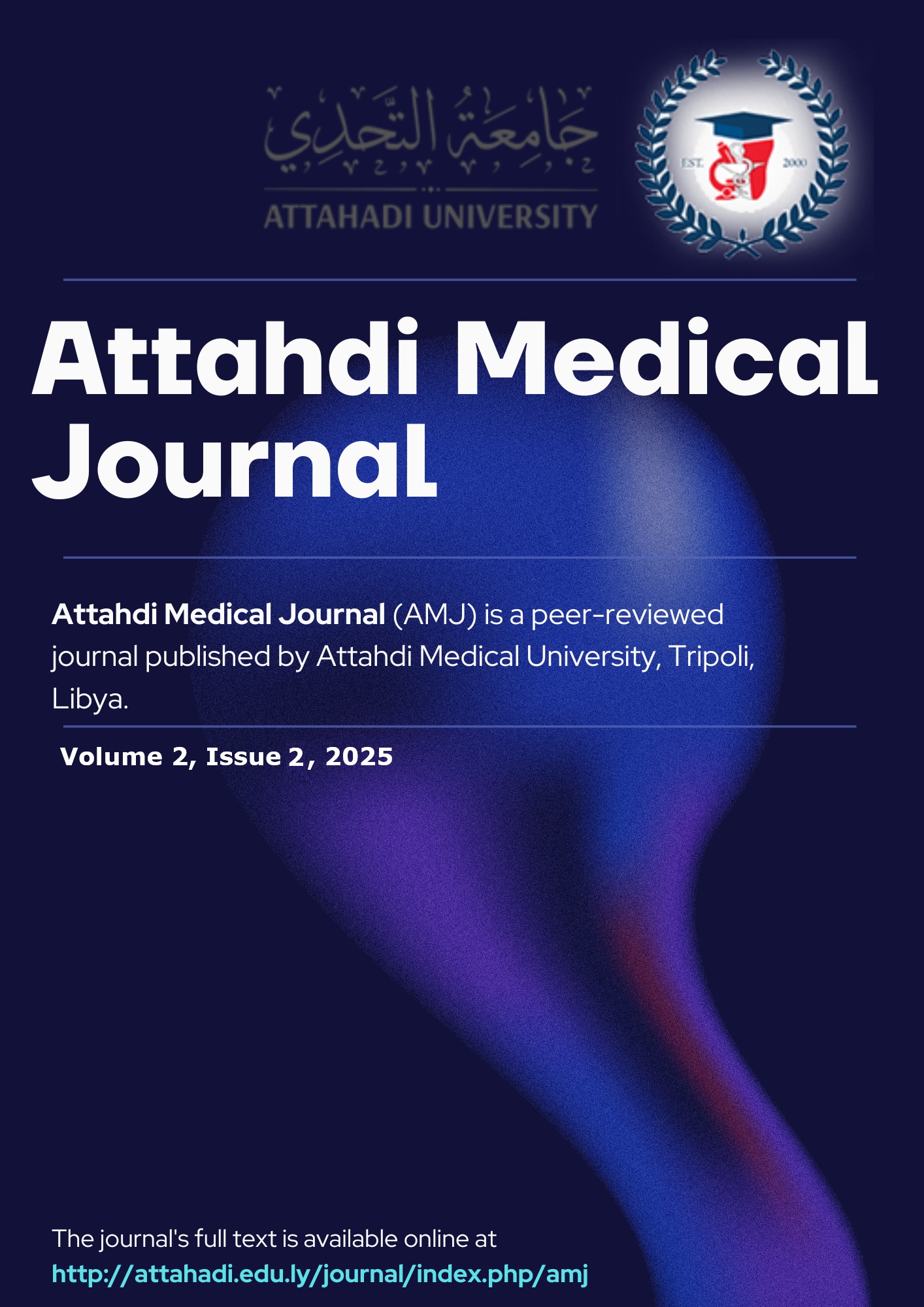Correlation between Anthropometric Measurements and Serum Cholesterol Among Undergraduate Students at the University of Tripoli
DOI:
https://doi.org/10.69667/amj.25206Keywords:
Anthropometric Measurements, Serum Cholesterol, and Undergraduate Students.Abstract
The incidence of Type 2 diabetes mellitus (T2DM) across all age groups has increased sharply due to changes in lifestyle in populations around the world. The growing prevalence of this disease, in recent decades, is now recognised as a global epidemic and an important public health issue. Therefore, this study aimed to investigate the correlation between anthropometric measurements and FBS, TC, and HDL-C levels. A cross-sectional study involving a survey questionnaire, anthropometric measurements, and 5 mL of venous blood was drawn from 117 University students (aged 17-30) in the University Infirmary. FBS, TC, and HDL-C levels were measured by an automatic device, COBAS INTEGRA 400 plus, in Shaara Zawiya Hospital laboratory. 45.3% of the students were found to be overweight or obese, and HDL-C was negatively correlated with weight (r= -0.391, P= 0.0001), BMI (r -0.456, P = 0.0001), waist circumference (r = -0.344, P =0.001), and hip circumference (r = -0.343, P = 0.001). Use of anthropometric measurements has proven very simple and effective in identifying decreases in HDL-C levels in overweight or obese individuals, in a relatively young population, which in turn may help in early identification of metabolic disorders.












